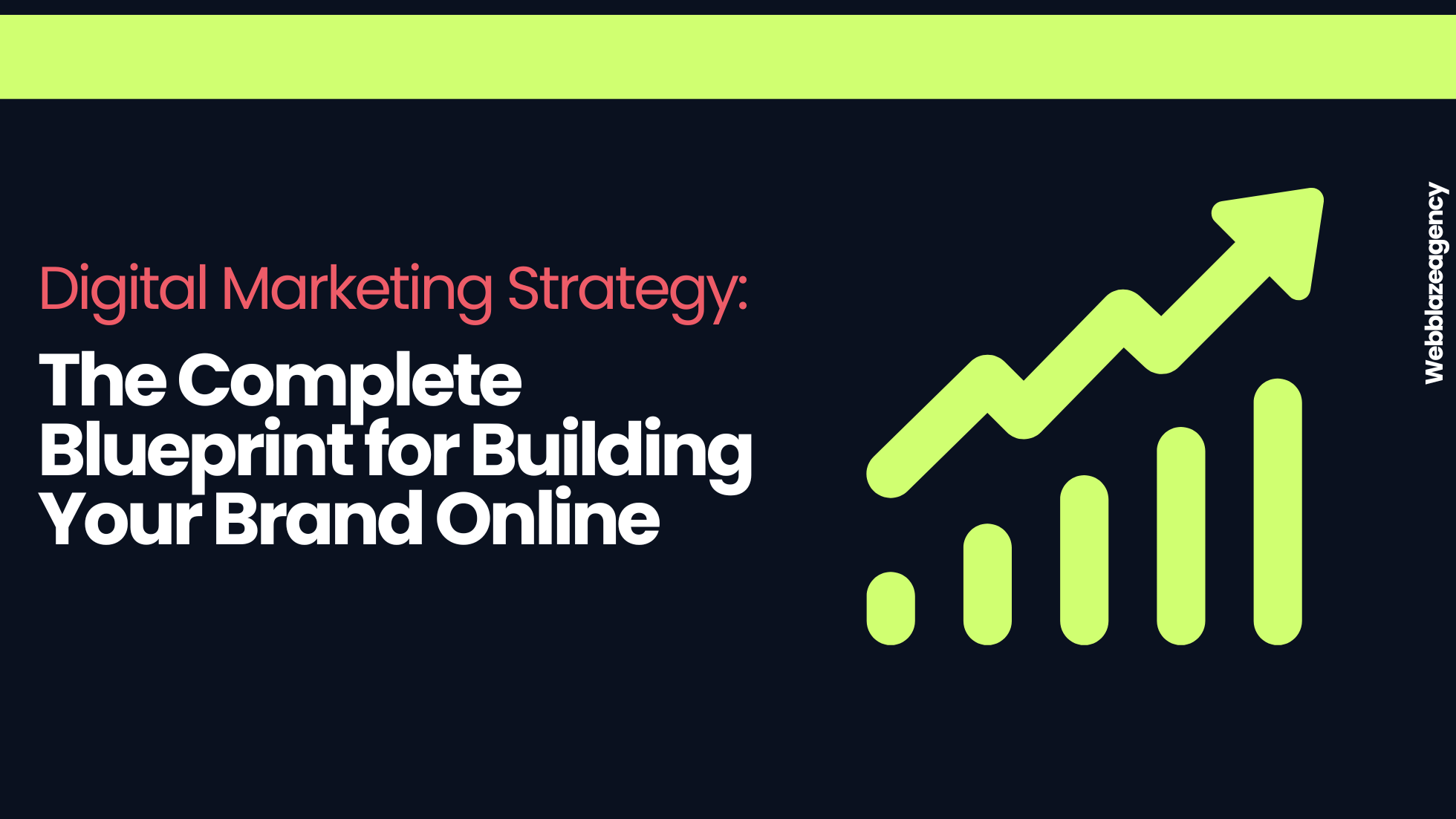In today’s digital landscape, having a marketing strategy isn’t just useful—it’s essential. Whether you’re a startup owner, seasoned marketer, or a newcomer, understanding digital marketing can set you apart and boost your brand’s growth. This guide outlines the essentials for building a successful digital marketing strategy, offering a clear plan to reach your audience effectively and achieve your goals.
What is Digital Marketing?
Digital marketing leverages online channels—like social media, email, search engines, and content marketing—to connect with your target audience, boost brand awareness, and drive conversions. Unlike traditional methods (e.g., TV ads, billboards), digital marketing allows you to measure results, make quick adjustments, and engage with customers directly.
Key Digital Marketing Channels
- Search Engine Optimization (SEO): Enhances website visibility on search engines.
- Content Marketing: Provides valuable information to educate, engage, and convert customers.
- Social Media Marketing: Builds a brand presence on platforms like Facebook, Instagram, and LinkedIn.
- Email Marketing: Nurtures leads and engages customers through personalized content.
- Pay-Per-Click (PPC) Advertising: Drives traffic through paid ads on search engines and social media.
- Affiliate Marketing: Involves partnerships with individuals or companies that promote your product for a commission.
- Influencer Marketing: Expands brand reach and builds credibility through influencers.
What is a Digital Marketing Strategy?
A digital marketing strategy is a step-by-step plan that outlines how you’ll use these channels to meet business goals. Rather than ad hoc efforts, a cohesive digital strategy aligns various elements—like social media, blog content, and targeted ads—so they work together to attract, engage, and retain customers.
Example of a Digital Marketing Strategy: Imagine you run a small fitness brand. Your digital strategy might include:
- Goal: Increase online sales by 20% in six months.
- Channels: Use Instagram for brand awareness, SEO for organic traffic, and email marketing for retention.
- Content: Share weekly blog posts on fitness tips, post workout videos on social media, and send out a weekly newsletter with exclusive offers.
- Metrics: Track engagement, conversions, and sales data to adjust your approach.
Why is a Digital Marketing Strategy Important?
A well-defined digital marketing strategy provides structure and focus, helping you use resources wisely, monitor progress, and adapt as you learn.
- Focused Efforts: A strategy aligns marketing with business goals, reducing wasted time.
- Resource Efficiency: You can prioritize channels that yield the best results.
- Consistent Messaging: A unified brand message builds trust, loyalty, and reputation.
- Measurable Results: Track each campaign, learn from the data, and refine as needed.
Understanding the Building Blocks of Digital Marketing
1. SEO (Search Engine Optimization):
SEO optimizes your website to rank higher in search engine results, making it easier for people to find you when they search for relevant terms. SEO has two main elements: on-page and off-page strategies.
- On-Page SEO: Focuses on individual web pages, optimizing elements like title tags, meta descriptions, headers, and content to improve visibility.
- Best Practices: Use descriptive keywords, format for readability, and provide high-quality content.
- Example: If your website sells eco-friendly beauty products, optimize product pages with keywords like “sustainable beauty,” “eco-friendly skincare,” or “organic makeup.”
- Off-Page SEO: Involves actions outside your website, like link building and social media marketing, which enhance your site’s credibility.
- Best Practices: Earn backlinks from reputable sites, engage on social media, and pursue partnerships for guest blogging.
SEO Tips:
- Conduct regular keyword research to keep content relevant.
- Optimize site speed and mobile functionality for better user experience.
- Create informative, engaging content that encourages readers to stay.
For insights on improving local search rankings, check out these strategies to drive more customers to your door.
2. Content Marketing:
Content marketing complements SEO by providing valuable information to engage your audience and establish your brand as an expert. The main types of content include blogs, videos, infographics, and downloadable resources.
Content Marketing Strategies:
- Blogs: Write informative posts about topics your audience is interested in. A home decor brand, for instance, might publish “DIY Decorating Tips” or “How to Create a Cozy Living Room.”
- Videos: Platforms like YouTube and Instagram are ideal for how-tos, behind-the-scenes content, and customer testimonials.
- Infographics: Use visuals to simplify data, processes, or ideas.
- eBooks/Whitepapers: Create in-depth guides that your audience can download in exchange for contact information.
Benefits of Content Marketing:
- Strengthens SEO by generating organic traffic.
- Engages potential customers who may become loyal followers.
- Builds credibility by positioning your brand as an industry authority.
3. Social Media Marketing:
Social media lets brands engage directly with their audience. Platforms like Instagram, LinkedIn, and TikTok offer unique ways to connect, share updates, and build loyalty.
Creating a Social Media Strategy:
- Choose Your Platforms: Focus on those your target audience uses.
- Set a Content Calendar: Plan regular posts that fit your brand and audience’s interests.
- Engage Actively: Respond to comments, join conversations, and use interactive features like polls.
- Use Paid Ads: Platforms like Facebook and Instagram offer targeted ads to reach specific audiences.
Example: A sustainable fashion brand could post eco-friendly tips on Instagram, share industry articles on LinkedIn, and run seasonal promotions on Facebook.
4. Email Marketing:
Email marketing remains one of the best ways to nurture leads and keep customers informed. Personalized, segmented email campaigns speak directly to your audience, driving engagement and conversions.
Best Practices for Email Marketing:
- Grow Your List: Use signup forms, lead magnets, and discounts to build your subscriber base.
- Segment Your Audience: Send relevant content to different segments, like past customers or new subscribers.
- Write Compelling Subject Lines: Grab attention to improve open rates.
- A/B Test Campaigns: Try different subject lines, content, and timing to see what works best.
Example: A fitness app might send a welcome email with workout tips, followed by weekly motivational messages and special offers.
5. PPC (Pay-Per-Click) Advertising:
PPC advertising, used on platforms like Google and social media, allows you to bid on keywords to appear at the top of search results. PPC generates targeted traffic quickly but requires careful budget management.
Creating an Effective PPC Campaign:
- Keyword Research: Use tools like Google Keyword Planner to find high-intent keywords.
- Craft Persuasive Ad Copy: Focus on benefits with a clear call-to-action.
- Set a Budget and Bid Strategy: Monitor spending to align with conversions.
- Analyze and Adjust: Track performance metrics to refine keywords, bids, or ad copy as needed.
Example: A travel agency might use PPC ads targeting keywords like “last-minute flights” or “holiday deals,” linking to pages with special offers.
Benefits of Digital Marketing Over Traditional Marketing
Compared to traditional marketing (print ads, TV commercials, billboards), digital marketing is more flexible, affordable, and measurable.
- Global Reach: Access audiences worldwide through online platforms.
- Precise Targeting: Tailor ads to specific demographics, locations, or interests.
- Real-Time Tracking: Adjust campaigns instantly based on performance data.
- Cost-Effective: Digital ads often require less investment than traditional methods, delivering a better ROI.
How to Build a Comprehensive Digital Marketing Strategy
1. Set Clear Goals with the SMART Framework
To create a successful digital marketing strategy, start by defining SMART goals—Specific, Measurable, Achievable, Relevant, and Time-bound. This framework helps ensure your objectives are actionable and aligned with your vision.
Example of SMART Goals:
- Goal: “Boost website traffic by 30% in six months through SEO and content marketing.”
- Action Plan: Publish four blog posts per month, optimize old content for keywords, and promote articles on social media.
2. Identify Your Target Audience
A successful marketing strategy starts with understanding your audience. Buyer personas represent your ideal customer and help personalize your approach.
How to Create Buyer Personas:
- Gather Data: Use surveys, analytics, and social media insights to understand audience demographics.
- Pinpoint Pain Points: What are common challenges your audience faces?
- Develop Profiles: Summarize each persona with details like age, interests, values, and preferred channels.
3. Map the Customer Journey
Mapping the customer journey helps you understand each stage your buyer goes through—from awareness to decision-making—and ensures you meet their needs at each touchpoint.
Key Stages in the Customer Journey:
- Awareness: Customers become aware of your brand through social media, blogs, or ads.
- Consideration: They evaluate options through product pages, reviews, or comparisons.
- Decision: They decide to purchase, often influenced by pricing pages, testimonials, or special offers.
- Retention: Follow up with loyalty emails, newsletters, or offers to keep them engaged.
4. Conduct a Competitive Analysis
To stand out, it’s essential to understand what your competitors are doing. A competitive analysis helps you find gaps, strengths, and areas where your brand can excel.
Competitor Research Tools:
- Social Media Monitoring: Track competitors’ engagement with tools like Hootsuite.
- SEO Analysis: Use Ahrefs or SEMrush to analyze competitors’ keywords and backlinks.
- Content Review: Examine your competitors’ blogs, website layout, and engagement.
Implementing and Monitoring Your Strategy
1. Create a Marketing Plan
A digital marketing plan defines what, when, and where you’ll publish content. Use planning tools like Trello or Monday.com to stay organized.
Plan Components:
- Goals and Objectives: SMART goals aligned with business targets.
- Content Calendar: Schedule blog posts, social media updates, and email campaigns.
- Assign Roles: Clarify team roles for accountability.
- Budget: Outline spending across channels.
2. Monitor Campaign Performance
Tracking results shows what’s working and where improvements are needed.
Key Metrics:
- Traffic and Engagement: Track website visits, bounce rate, and time on page.
- Conversions: Monitor conversion rate, cost per acquisition, and return on ad spend.
- Email Metrics: Analyze open rates, click-through rates, and unsubscribes.
- SEO: Track organic search traffic, backlinks, and keyword rankings.
Conclusion: Embrace Digital Marketing for Long-Term Success
Digital marketing requires ongoing learning, adaptation, and refinement. Start with clear goals, use a structured approach, and let data guide your decisions. In doing so, you’ll build a strong foundation for brand growth, customer loyalty, and long-term success.
Ready to dive in? Begin with the basics, and as you progress, try advanced strategies to expand your digital reach and connect with your audience. Need help with boosting local search rankings? Check out this guide to drive more local customers to your door.

